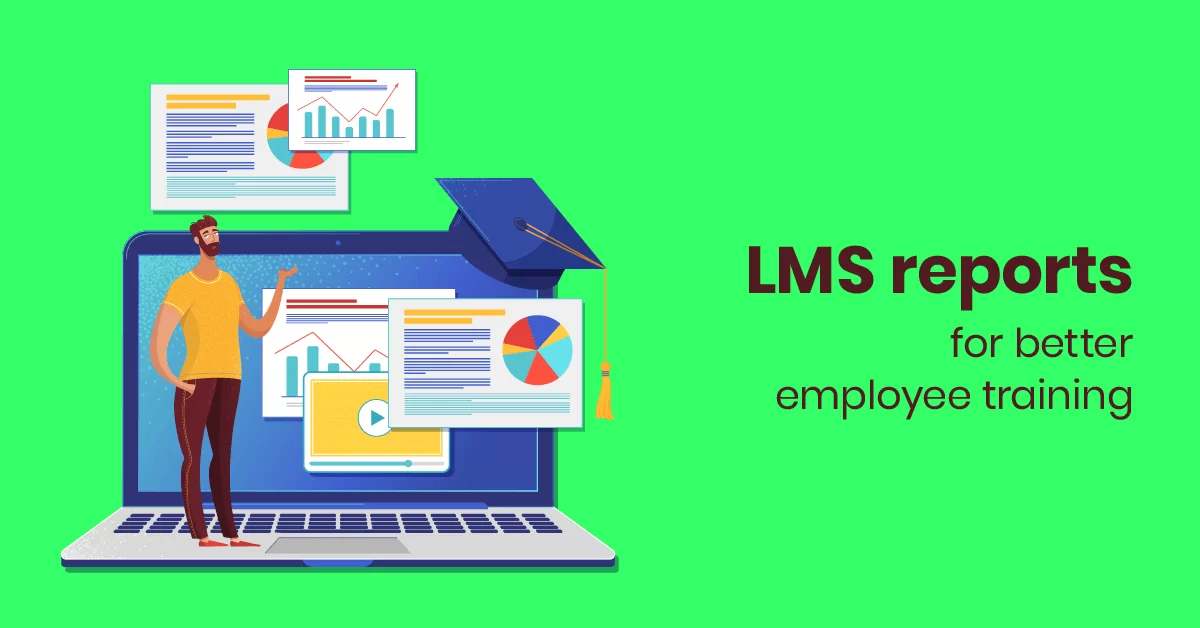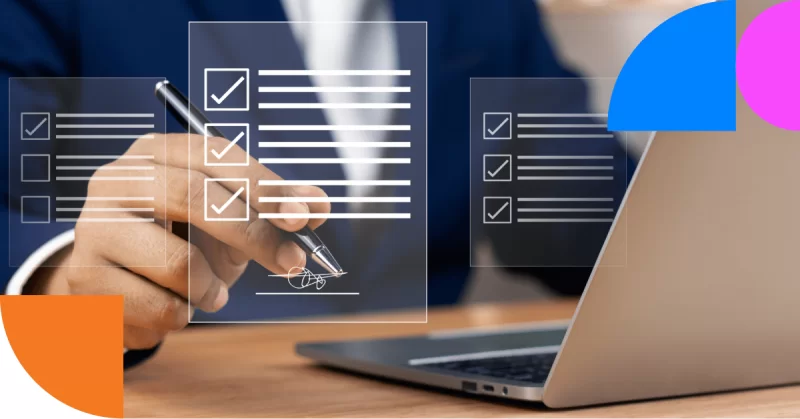Think about it: When it comes to employee training, it’s both the journey and the destination that counts. As much as training itself is a rewarding process for learners and enhances company culture, the bottom line should be to improve employee performance and hit your KPIs.
And how will you know if your employee training actually achieves its purpose if you’re not tracking and collecting LMS data?
Not taking full advantage of your LMS reporting is like driving with your eyes closed: it affects both the quality of your journey and your ability to reach your destination.
How LMS reports can make employee training easier
Are you still unsure about whether you should be using LMS reporting — and how to do so? Here are five reasons why you need LMS reports and how they can make employee training easier and more efficient.
1. Track employee training progress
Let’s start with the most obvious reason to use LMS reports: to track training and gauge your program’s effectiveness.
Like we already mentioned, it’s both the journey and the destination that counts when it comes to employee training. You need your program to work — i.e. to improve your employee’s skills, address any knowledge gaps and ultimately improve performance. You need to be able to see if your investment provides some measurable ROI.
LMS reporting is the best way to get a sense of how the program is actually doing: if your employees are able to complete training or if there are any elements that need reconfiguring. You can collect various metrics from your LMS: from attendance and scores to dropout rates. You can also see which elements of your training yield the most results performance-wise and which ones don’t really help move the needle.
2. Get the gist of the data, in a way that’s easy to view
LMS reports can make employee training easier by making your own life easier, too, while you read the data. Centralized reporting makes the whole process of data collection seamless — and saves you a lot of headache.
Of course, there are different types of LMS reports, each of them useful in their own right. But when you need to get the gist of the LMS data fast, in an easy-to-view visual style, then an infographic will go a long way.
Infographic reports are easy to peruse, easy to share across stakeholders and more efficient when it comes to information retention. There’s just something about icons and big numbers that makes it easier for the brain to digest information as opposed to comparing lines in spreadsheets.
To make the most of your LMS reporting capabilities while also making it easier for yourself to digest the data, choose an LMS solution that offers infographic reports such as eFront.
3. Report to upper management on your training program’s progress
For a training program to run smoothly and keep bringing results, everyone should be on the same page. But providing frequent updates to your CEO or upper management can eat away at your time (and theirs). This is where LMS reports can also prove to be helpful.
Many learning management systems, like eFront, allow you to schedule and automatically send reports at a certain frequency to a list of recipients — which will make giving periodic status updates to your CEO that much simpler.
4. Optimize training content continuously
Here’s one of the best things about continuous employee training: it’s not set in stone. And it really shouldn’t be. Your content should be frequently updated based on what works for your team and on how training affects job performance.
But optimizing course content can be an exercise in futility if you’re not quite sure exactly what needs fixing and when. Enter LMS reporting.
Once you’ve made creating regular LMS reports (and sharing them with upper management) a habit, you’ll start seeing some patterns in user behavior. The more time goes by, the more you’ll be able to understand how these patterns affect your KPIs.
5. Increase learner engagement
You can get valuable data from LMS reports. By using these findings to understand the way your employees learn and tweak the content as needed, you reach another goal: to engage your learners.
LMS reports can show you the types of learning and methods of content distribution your employees respond better to, e.g. whether or not they prefer videos and quizzes. This way, you can optimize not only the content of your courses, but the methods of delivery as well.
Keeping your employees more invested and excited about their learning helps significantly — both with employee retention and with improving company culture.
Conclusion
Using LMS reports and analytics can make a huge difference in the success of your employee training program. That’s why you need an LMS like eFront that can offer you a variety of reporting options, like infographic reports.
eFront comes with a number of built-in, turn-key analytics that cover all major platform entities: the overall System, Users, Courses, Curriculum, Tests, Surveys, SCORM units, and Certificates. There’s also a Timeline-style report that serves as a log-tracking system and learner-related events.



